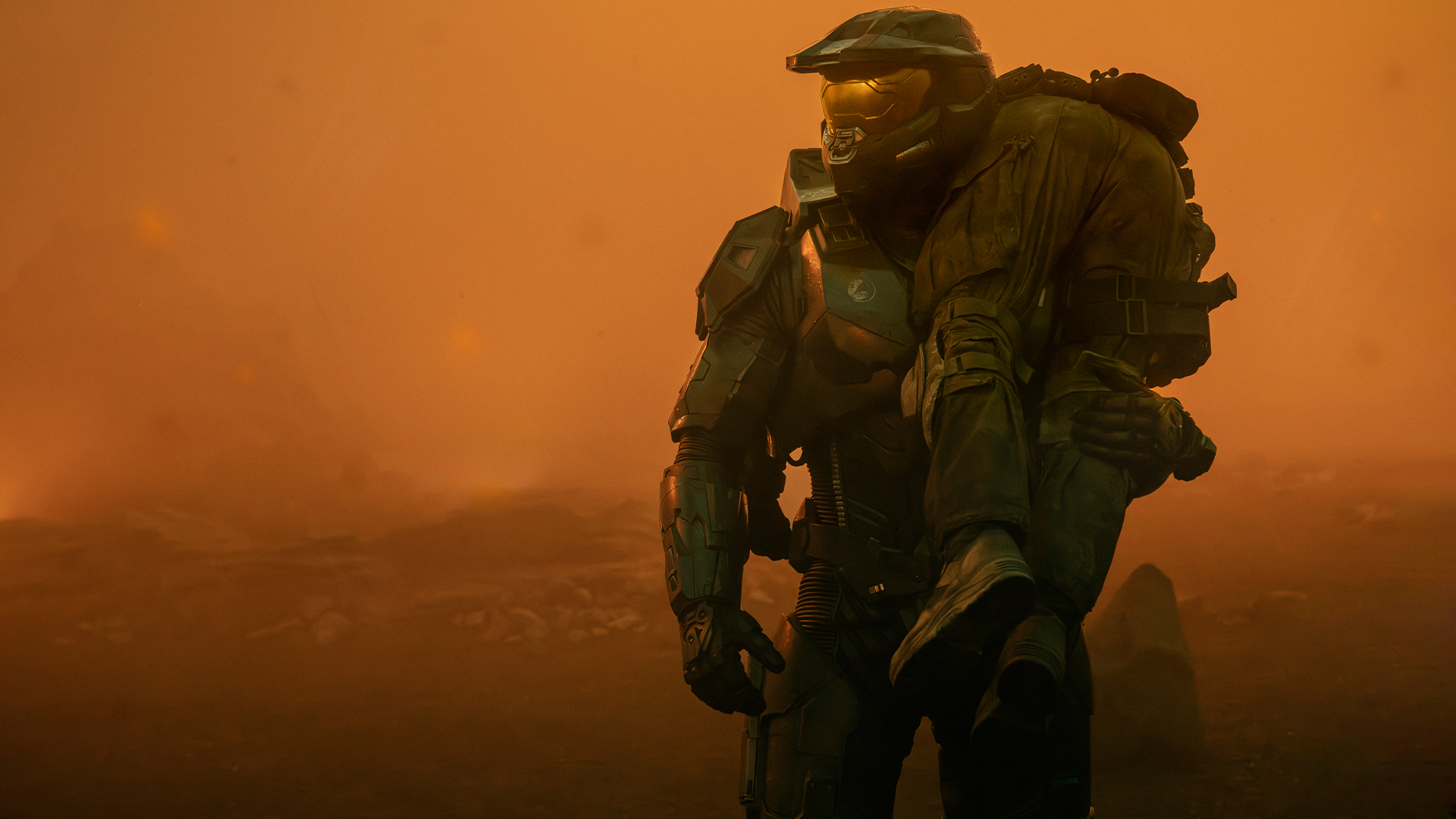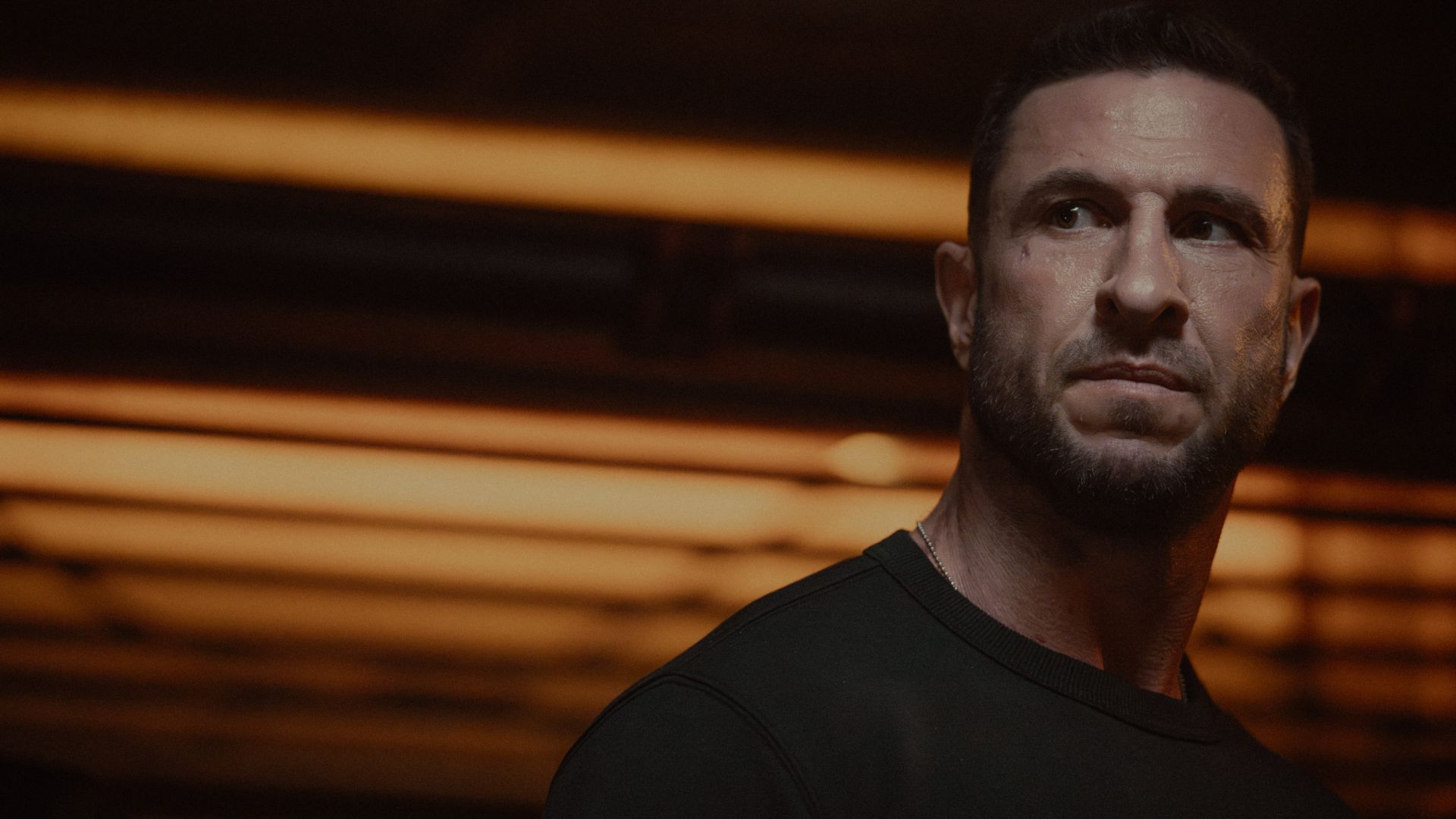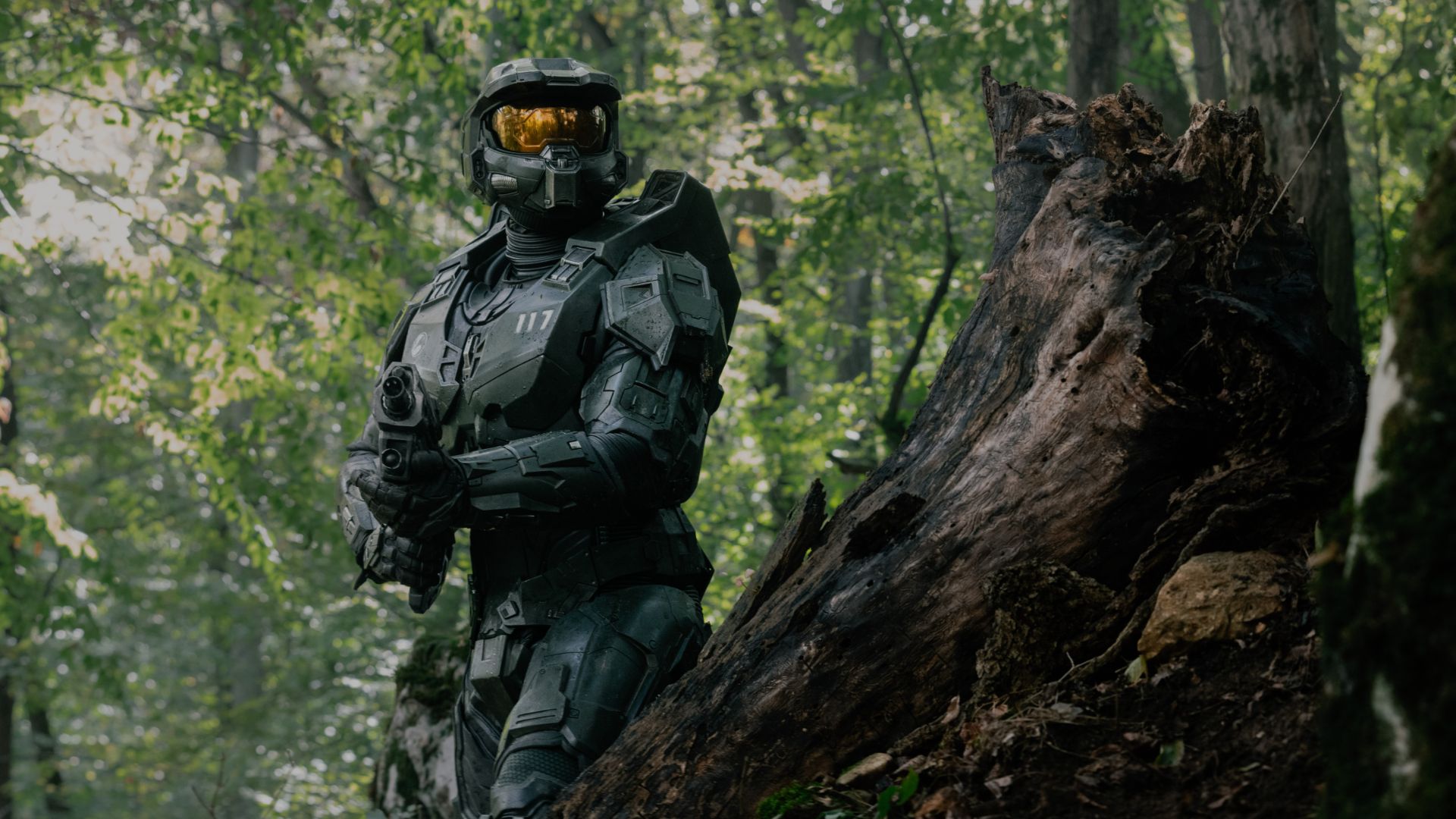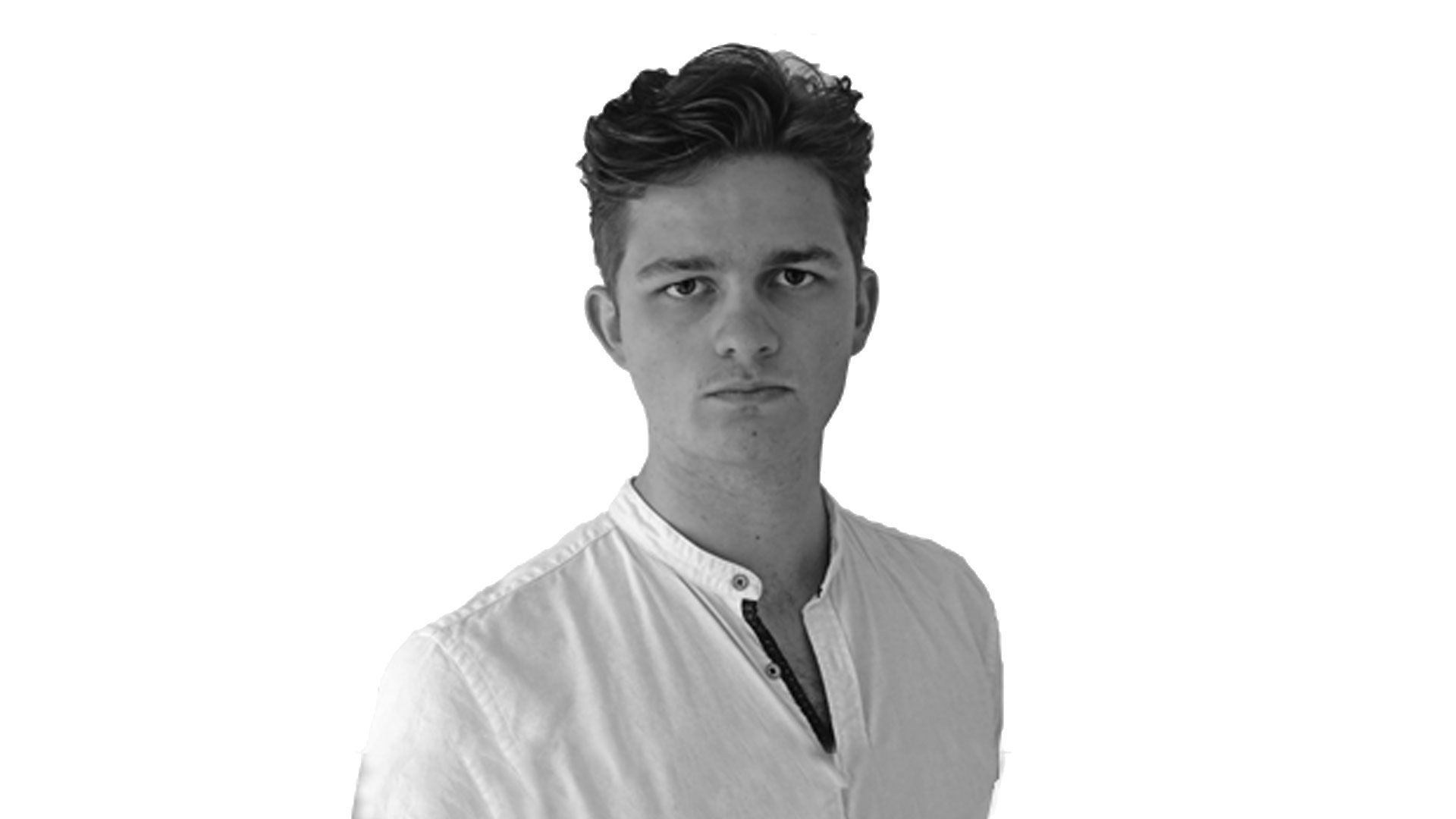Halo TV show's Master Chief actor on controversial storylines and why season 2 is much darker
Exclusive: Read SFX's full Halo season 2 cover story here

Master Chief's battle-hardened, straight-talking persona must be wearing off on Pablo Schreiber, because the actor – who plays the iconic Spartan warrior in Paramount’s Halo series – does not mince words. For instance, when asked about the first season’s infamous sex scene between Chief, aka John-177, and the undercover Covenant agent Makee, he firmly criticises the narrative decision.

This feature first appeared in SFX magazine. Subscribe here!
"The decision to make the connection between Makee and John a romantic connection was a huge mistake," he tells SFX. "I felt it was a huge mistake at the time and I argued against it and fought against it. But I am who I am. I don’t write the scripts. I only give my opinion. It wasn’t listened to."
He similarly makes his feelings known about fans who were angered when, during the pilot episode, Chief removed his helmet – something that’s never happened in the Halo game series, despite there being six mainline entries. "People who don’t feel the helmet was necessary to come off, they’re at such an early conception of what the show could be," he says. "In order to examine the discrepancy between these two versions of the character [Chief and John-117], you can’t tell that story without taking the helmet off. If you don’t agree with the helmet coming off in the show, you don’t like our show. So there’s no point discussing it."
Even the visuals of the first season are not beyond reproach. "I felt it got lost in some gloss. The visuals, for me, just didn’t look as high-end, as classy, as cinematic as they could have been." And as for the season’s final moments? "The decision to end the season the way we did, I felt brought up a lot of challenges. Where do you go with that?"
Luckily, a lot has changed between seasons. David Wiener – previously showrunner on Brave New World and co-executive producer on Fear The Walking Dead – has come aboard to command Halo’s second season, and the differences are clear from the outset. The opening episode is strikingly gritty, feeling more akin to Star Wars’ Andor than Ahsoka, and tonally darker and more mature than anything in the first season.
"The tonal shift just feels so much more appropriate for the franchise," Schreiber says. "It’s darker, it’s more dangerous, all of the stunt and action sequences put you into the battle and inside the fighting. To me, it’s a much more effective way to deal with the show… I think [Wiener] is just a more gifted writer, to be quite frank," he continues. "I think his dialogue is better. He puts words in the mouth that feel more appropriate for the character."
The reset button

The first season concluded with the artificial intelligence Cortana taking over Chief’s body after his apparent death, the implication being that she would control Chief for the foreseeable future. However, the second season opens with Cortana being removed from Chief. He then continues his battle against the Covenant, although he suffers some significant PTSD from the whole experience.
Sign up to the SFX Newsletter
Get sneak previews, exclusive competitions and details of special events each month!
"That was a decision that David made in wanting to reset the relationship with Cortana; he wanted to start with having them apart, so he could bring them back together," Schreiber explains. "We spent the entire [first] season trying to build character development, and then at the end pulled the rug out and said, ‘No, we’re resetting back to zero.’ And that dynamic makes it really hard to make television that progresses. The whole point of the series was to get into the mindset of this split character, this guy who lives as Master Chief but also has this dawning realisation of John, who is underneath."
The second season, then, sounds like something of a readjustment. "I don’t want to say a soft reboot, but there was intent to reset the state of the world," Kiki Wolfkill, one of Halo’s executive producers and the head of property expansion at Microsoft, tells SFX. "It was a goal to do a few things. One was really to start to shift tonally to a place that was a little more grounded and grittier, but still with the big spectacle of Halo and sci-fi."
Had they continued directly on from the first season’s ending, rather than implementing a “six-ish” month time-jump between seasons, Wolfkill says they wouldn’t have been able to jump right in and tell the story they wanted to tell across eight episodes. "It’s about coming from a long-term storytelling perspective, and asking, ‘Where’s the right place to start from?’" For Wolfkill, the change in approach was partly down to the second season having a very different production period compared to the first.
To recap: Steven Spielberg was first attached as an executive producer back in 2013, and an initial release date was established for 2015. The series then entered development hell, with updates only sporadically appearing in the press, until filming finally commenced in late 2019, only for the pandemic to halt proceedings, which restarted in 2021. The series was finally released a year later. "Season two, we were able to be much more focused-in,” she says. “Like with game development, you come out of your first game and you have a laundry list of things that you would approach differently or that didn’t quite hit the mark.
There were very specific things we knew we wanted to do with season two, and frankly, bringing in a new showrunner let us do that in a more extreme way than we would have if we were just continuing on with season one. We felt like we needed to be brave with it. “Tone was something that was there from the beginning. So that was our North Star, as was getting some really strong characterisation and dialogue this season. A lot of season one was, ‘How do we figure out how to make a show of the scope and scale? And how do we bring the Halo universe to life?’ We learned all of those great lessons. Then it was about how we focus on the nuance of what we want that universe and story to feel like.”
It would be easy to assume that the fan response to the first season played a role in the series’ revamp. “I don’t spend a lot of energy worrying about that stuff, because it’s completely beyond my control,” Schreiber says, bluntly. Wolfkill, though, is not quite as dismissive. “It’s such a complex topic. We probably had a longer list of things we wanted to do, and criticisms, coming out of season one than all of the online feedback put together. That’s just the job of creating the experience. It’s never exactly the thing that you want, there’s always more you want to do and there’s always more you want to do better.
“That said, that feedback is really important. What’s always a challenge is: how do you separate some of the emotional noise from the critiques and constructive feedback that’s important to take? It can be really demoralising. It’s hard when you’ve watched thousands of people put so much into a project and have it so easily dismissed. But things that were controversial in season one, it was not a surprise that they were controversial and it was a very easy decision not to do some things again… some things that became memes.”
There’s one moment in particular that comes to mind: when John-117 removes his clothes and bares his behind. The result was an unfl attering nickname: Master Cheeks. It was a risky move to show one of gaming’s most revered characters in a new light. “It was always a desire to give the people who know the Halo universe something different, and that inherently meant taking risks,” Wolfkill says. “There are things like ‘Master Cheeks’ where I will say, admittedly, it was a blind spot for me how strong the reaction would be. “At the end of the day, taking a risk like that again is more about, do we need it to support the story? At the end of the day, does ‘Master Cheeks’ need to happen again to support the story? Probably not. That’s not the kind of risk that’s worth taking.
Armour wars

Season two will go some way to rectify a few of the risks taken that went wrong, including Schreiber’s biggest bugbear, Chief’s romance with Makee – a character who has a unique connection to Chief. They’re both “Blessed Ones” who can interact with the alien artefacts known as Keystones. “That connection was far more interesting as a deeply fraternal sister/brother – they’re the same, and it could have been much more interesting without sex,” he says. “There is some good, high-quality narrative risk-taking in the second season. And there’s narrative risk-taking that doesn’t make any sense. “That’s my opinion on that one. But again, we’re weaving the web that we’re weaving. David had to deal with those decisions that were made in the first season, and I think he deals with them pretty well. I like the nature of where the John/Makee story goes. It’s certainly not romantic any more.”
Whatever past choices that he may disagree with, Schreiber is emphatically positive about what’s to come. “There’s no question the second season is far stronger than the first,” he says. “I will stake my reputation on that. It’s absolutely improved. The art director who came on-board, James Foster, is fantastic. He created a visual world that just makes a lot more sense. It’s so beautiful, incredibly cinematic. And the dialogue is better. It’s just a better season, period.” Wolfkill points to how the scale has grown, with filming taking place in Slovenia, Italy and Iceland. “The shooting style too, even in some of the action moments, it feels like you’re really in there,” she says. “There’s an intensity that comes with that, the highs and lows. I’m really excited to give you something that you feel viscerally, as well as a great story.”
The story begins again with Chief, along with his team of Spartans, protecting a planet from being “glassed” by the villainous Covenant. Chief feels like they’ve been put on “babysitting” duty, as Schreiber puts it, and that it’s not work worthy of Spartans. “I love the camaraderie of John exactly a hit with Chief’s team. “The antagonistic relationship is just a fun one to play,” Schreiber says. “There’s a mistrust of John that goes on in the first few episodes. Is he losing it?” The lack of confidence in Chief comes partly from his history with Makee. Also, in the opening episode, his life is spared by a member of the Covenant wearing Arbiter armour. Now, anyone who has played Halo 2 will know the Arbiter, a playable character voiced by Keith David – but don’t get too excited just yet.
“He is an Arbiter,” Wolfkill says, “Arbiter being a title… I’ve probably just told you more than I was supposed to. It’s possible you saw Arbiter armour.” Whether this is the Arbiter of the games or another one altogether, the character is an interesting, confl icted one: the role of Arbiter is bestowed by the Covenant’s leadership on disgraced commanders so that they can atone for past failures. They are intended to die in the line of duty.
“It’s something of a sacrificial role, but what it does is create this beautiful foil, as it did in the games, and also a viewpoint into some of the zealotry of the Covenant,” Wolfkill continues. “It’s important for us to have a good foil for the Master Chief.” Considering that Chief doesn’t meet the Arbiter in the games until Halo 2, and the first season told a story from before the first Halo, there appear to be a few signifi cant changes being made to the timeline.
The situation has previously been likened to the way the Marvel movies take inspiration from the source material, but the story changes somewhat, and Wolfkill agrees to a point. “We talk about the Halo Silver Timeline [aka the TV timeline] as an alternate history, but the big things that happen in the [game] universe are still really important,” she says. “Like how the Halo rings [which are ancient weapons] are discovered and what that means. And so while we may look at an event like the Fall of Reach [in which the Covenant defeat the UNSC and destroy the planet Reach] differently, the impact is still the same.
“The Covenant is one step away from finding Earth, humanity is taking nearly its last stand, what the Covenant wants becomes more clear, and the race to get to the Halo ring is more dire.” How many events from the games will make their way into the second season remains to be seen. It’s unclear whether the Fall of Reach is one of them, and there’s no word on a third-season renewal. But whatever happens, there’s a whole lot more Halo to explore.
“We have so many stories to tell,” Wolfkill says. “It feels like there’s a long arc of multiple seasons that we would love to be able to tell.” The outspoken Schreiber concurs: “The depth and mystery of the Halo lore is so incredible. It is this vast resource that you could go on with forever. It could expand itself into so many different spin-offs. I love doing it. It’s a Herculean challenge, but it’s one that I really, really am proud to be a part of. “As long as people are interested in doing it, I’m here and happy to do it. It feels like a worthy challenge, and I love a big challenge. I would play in this world for as long as anybody was interested in having me.” Spoken like a true Spartan.
Halo season 2 is currently airing weekly on Paramount Plus. For more, check out all of the upcoming video game adaptations and our Halo season 2 release schedule.
Subscribe to SFX here to receive more cover stories like this straight to your door.

Jack Shepherd is the former Senior Entertainment Editor of GamesRadar. Jack used to work at The Independent as a general culture writer before specializing in TV and film for the likes of GR+, Total Film, SFX, and others. You can now find Jack working as a freelance journalist and editor.


